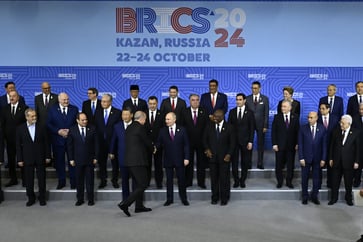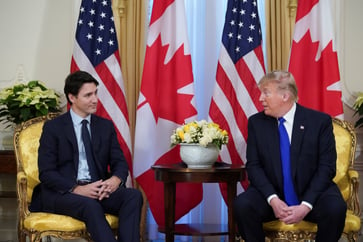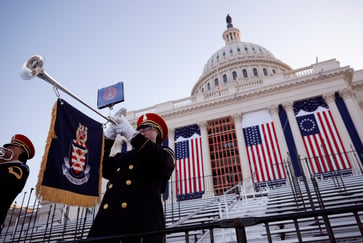Gaza areas see resurgence of Hamas as it deploys police and distributes funds
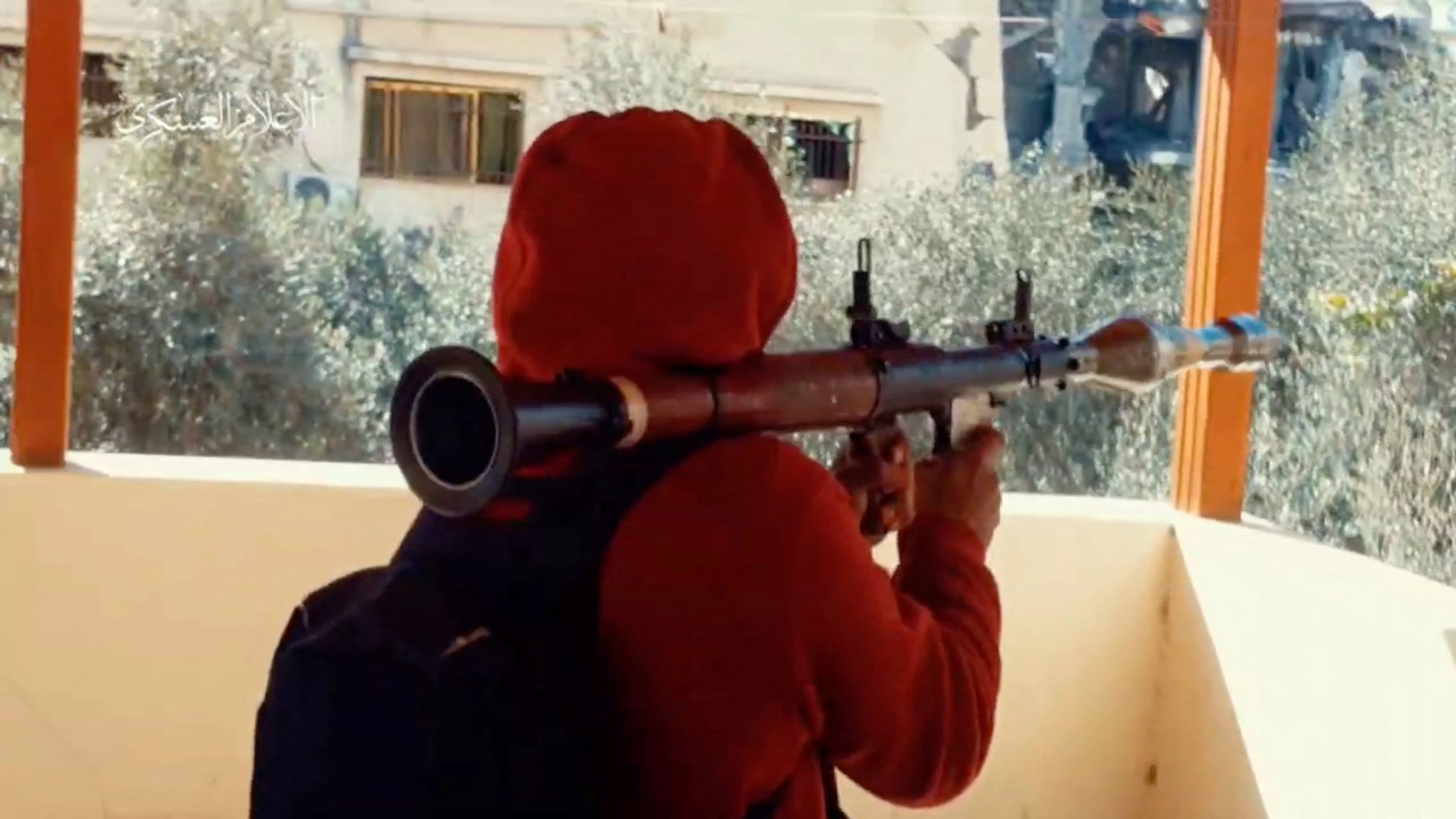
Recently, Hamas has started deploying police forces and making partial salary payments to some of its civil servants in Gaza City, which were previously occupied by Israel's troops, according to four residents and a senior official from the militant group.
Despite Israel's military campaign against Hamas in Gaza for the past four months, signs of a resurgence in the largest city of the strip suggest the group's resilience. Israel aims to crush Hamas militarily and prevent its return to power in Gaza, an enclave it has controlled since 2007.
Israeli forces have recently resumed attacks in the western and northwestern regions of Gaza City, specifically targeting areas where salary distributions were reported to have occurred.
According to four residents of Gaza City, in recent days, police officers have been deployed near government offices and Shifa Hospital, both in uniform and plainclothes. The residents reported seeing the return of civil servants and subsequent Israeli airstrikes near the makeshift offices.
An official from Hamas stated to AP that the resumption of police presence in Gaza is an effort to restore order in the city following Israel's withdrawal of several troops from the region last month.
The official stated that the group's leaders had instructed them to restore order in certain areas of the north where Israeli forces had withdrawn, including preventing looting of shops and homes left behind by residents who followed repeated Israeli evacuation orders and relocated to the southern half of Gaza.
During Israel's ground operation, numerous homes and structures were left partially destroyed or reduced to heaps of debris and dust.
A cousin of Saeed Abdel-Bar, a resident of Gaza City, received funds from a makeshift Hamas office near the hospital that distributed $200 payouts to government employees, including police officers and municipal workers.
Hamas has been running a government bureaucracy with thousands of civil servants in Gaza since taking control 17 years ago, including teachers, traffic police, and a separate military wing.
Despite claiming to have killed over 9,000 Hamas fighters, Israel's partial salary payments to government employees suggest that it has not completely defeated Hamas.
Israeli warplanes bombed the makeshift office in Gaza City multiple times this week, including on Saturday morning, according to Ahmed Abu Hadrous, a resident of the area.
A month after Israeli military leaders claimed to have dismantled Hamas battalions in the north, individual fighters have continued to carry out guerrilla-style attacks.
Meanwhile, combat continued in southern Gaza on Saturday.
Overnight in Rafah, a town on the border with Egypt in Gaza's southern region, at least 17 people, including women and children, were killed in two separate airstrikes. The registration office at a nearby hospital confirmed the deaths.
At least 13 people from the Hijazi family were killed in the first strike that hit a residential building east of Rafah, while at least two men and two women from the Hams family were killed in the second strike that hit a house in the Jeneina area of Rafah.
An AP journalist observed the 17 bodies at the Abu Yousef al-Najjar hospital, the primary healthcare facility in Rafah.
Over the past 24 hours, the Health Ministry in Gaza reported that 107 people were killed, increasing the wartime death toll to 27,238. Additionally, more than 66,000 people have been injured.
Over 1.2 million people from Gaza's population of 2.3 million have sought refuge in Rafah and its surrounding areas. A UN official stated on Friday that Rafah is becoming increasingly desperate.
Earlier this week, Israel's defense minister stated that Israel may expand combat to Rafah after focusing on Khan Younis for several weeks. This statement has caused concern among aid officials and international diplomats. However, if Israel were to send troops into Rafah, it would risk damaging strategic relationships with the United States and Egypt.
Nearly one-third of all structures in Gaza have been at least moderately damaged in nearly four months of fighting, according to the U.N. satellite center's latest analysis of available imagery.
Even though Israeli leaders have agreed to long pauses and the release of hostages, they have stated that they will continue to fight until Hamas, the ruling party in Gaza since 2007, is defeated.
Efforts by international mediators to bridge the significant differences between Israel and Hamas regarding a proposed cease-fire agreement have persisted, despite the ongoing conflict nearly four months after the October 7 attack by Hamas and other militants that resulted in the capture of approximately 250 hostages and the subsequent war.
Despite the release of over 100 captives during a one-week truce in November, Hamas still holds dozens of prisoners. The releases were made in exchange for 240 Palestinian prisoners.
The coastal enclave has been devastated by conflict, resulting in the displacement of 85% of its population and pushing a quarter of residents to starvation.
The United States, along with Israel, Egypt, and Qatar, launched an air assault on Iranian-backed militias and the Iranian Revolutionary Guard in Iraq and Syria on Friday, in response to the drone strike that killed three U.S. troops in Jordan last weekend.
politics
You might also like
- Trump's Stargate AI investment announcement is outshone by Musk.
- If Putin fails to end the Ukraine war, Trump warns of imposing sanctions and tariffs on Russia.
- Ross Ulbricht, the creator of the Silk Road, was pardoned by Trump.
- Oracle, OpenAI, and Softbank to invest in AI infrastructure, announced by Trump.
- In his final moments in office, Biden granted clemency to his relatives.







